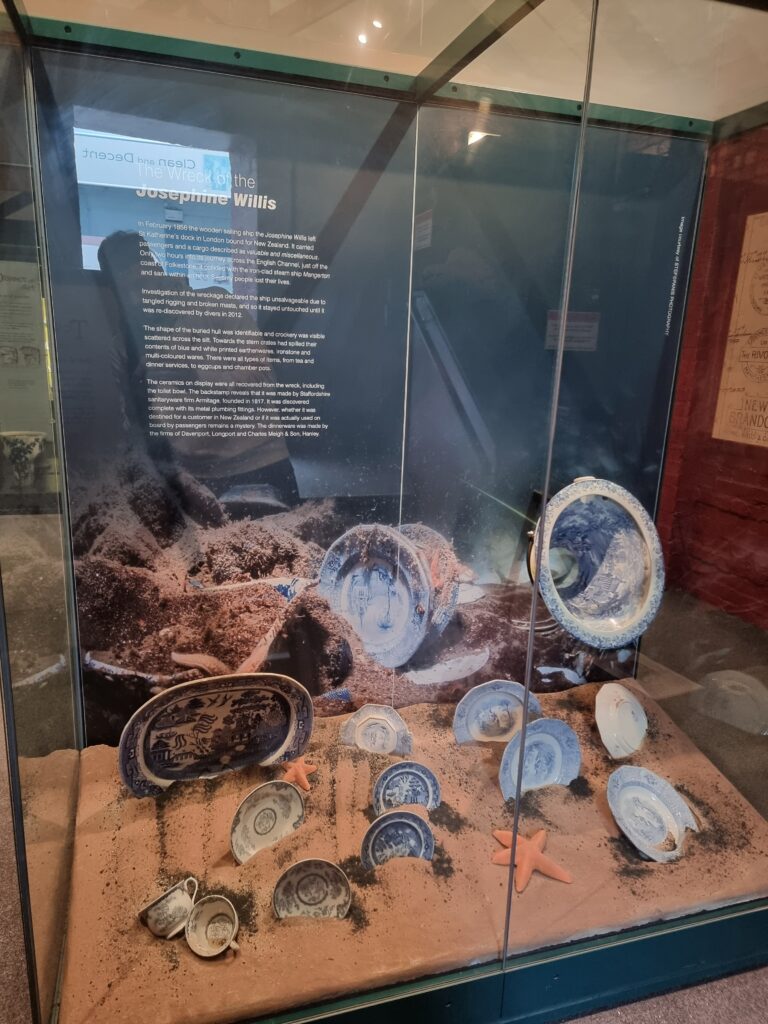
An email from John Bennett last week, giving me a link to a BBC news article on a new display at the Gladstone Pottery Museum, gave me an excuse to look again at one of my favourite characters from the history of Armitage potteries – Robert Hedderwick Penman. The picture above, courtesy of the Gladstone Pottery Museum, shows some of the items found on a shipwreck in the English Channel. On the right of the display you can see the toilet made by the Penman factory nearly 150 years ago. If you want to see the display and maybe walk inside one of the iconic bottleneck ovens then the museum is open this half-term week from Wed 22nd to Sun 26th February and will then be closed until April.
The shipwreck was first dived in 2012 and Stefan Panis recounted the first dives and finds in Divernet on 13th August 2018:
On all the many wreck-dives I have done over the years, I had never seen anything like this – a virgin wooden shipwreck, which appeared to have emerged recently from a sand-dune.
I CLIPPED MY REEL to the cannon and veered off. I found myself in a cargo hold – everywhere I looked, I saw wooden boxes and barrels, with the contents spilling out.
I saw wine and beautiful gin bottles, still corked. Near a wooden beam lay rows of decorated chamber-pots and, taking a closer look at them, I was amazed to find egg-cups inside, also decorated.
I ran my reel across the site and discovered more of the ship’s cargo. There was a huge amount of crockery, including plates and cups in different shapes and sizes, all beautifully decorated, and many of the items bearing the maker’s stamp.
The wreck was the Josephine Willis which was a 1000-ton wooden sailing packet built in 1854 for Fletchers of Limehouse and chartered by Willis & Co who ran a regular monthly line of packets to New Zealand. She had made one previous trip to New Zealand and had set sail for her second trip carrying 10 cabin passengers and about 60 steerage passengers together with a valuable and miscellaneous cargo. Just after entering the Channel the Josephine Willis was struck by a steamer, SS Mangerton, which pretty much cut her in two and out a total of 110 passengers and crew only 40 were rescued. The wreck has now been granted protection by the Department for Digital, Culture and Sport on the advice of Historic England.
One of the other members of the dive team, Eddie Huzzey, found a water closet complete with metal fittings and he has kindly allowed me to use his photographs (below) although they remain his copyright.
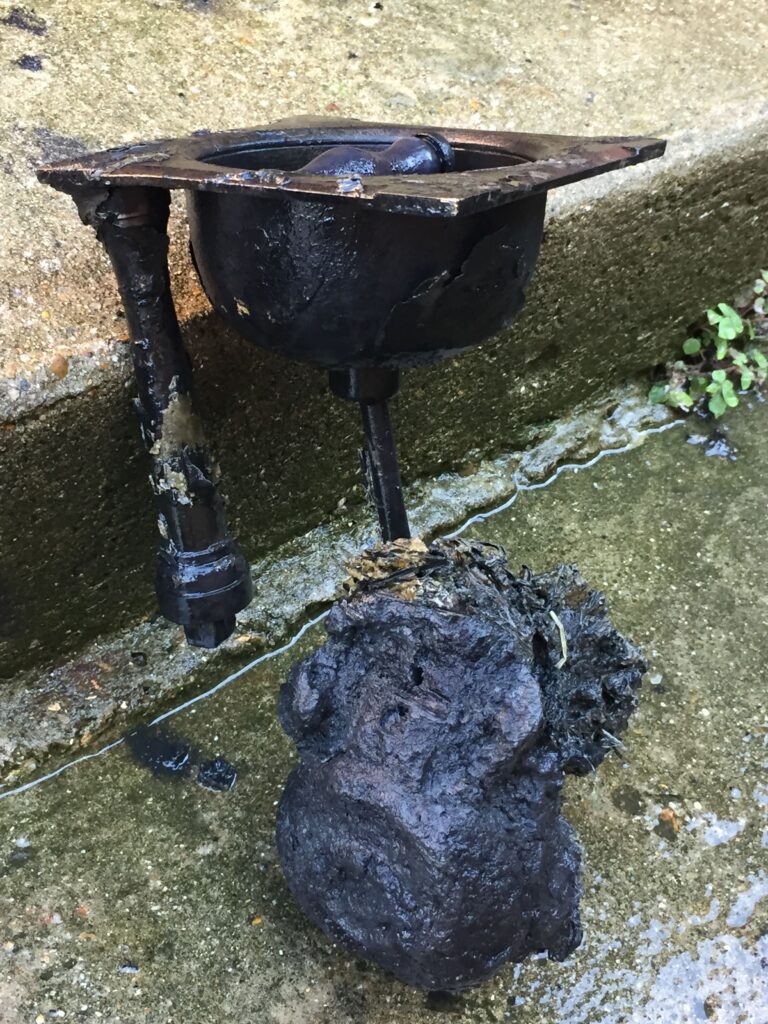




The first photographs show the toilet soon after it had been recovered from the water and the metal fittings are still attached showing the pull handle for flushing. The third one shows it after most of the cleaning work had been done and you can get an idea of the level of decoration on the inside of the bowl. In the fourth one the bowl has now been completely cleaned of mud and residue whilst the side on view very clearly shows the makers’ stamp – P.B. & Co Armitage. P.B. refers to a partnership which traded as Penman, Brown & Co and the partners were Robert Hedderwick Penman, his brother David Penman and George William Brown. Their pottery in Armitage was known as the New Pottery having been built in 1852 by Robert and his brother-in-law, Thomas Carey Swan. Quite why they built the factory at all is a mystery as Robert was a Glaswegian shipping agent and Thomas was a printer, also from Glasgow and just a year earlier they had both been living in London. And why Armitage? It wasn’t on any road route that they would have been likely to take but maybe they had passed it on the railway which had been built through the village a few years earlier in 1847. Their pottery, outlined in red on the plan below, was pretty substantial but Robert obviously had trouble keeping his partners happy. P.B. & Co only operated from June 1854 to October 1856 although during that time they also took over the lease of the old pottery next door to cope with increased demand. Over the eight year period that Penman ran the pottery in Armitage he traded with four different sets of partners.
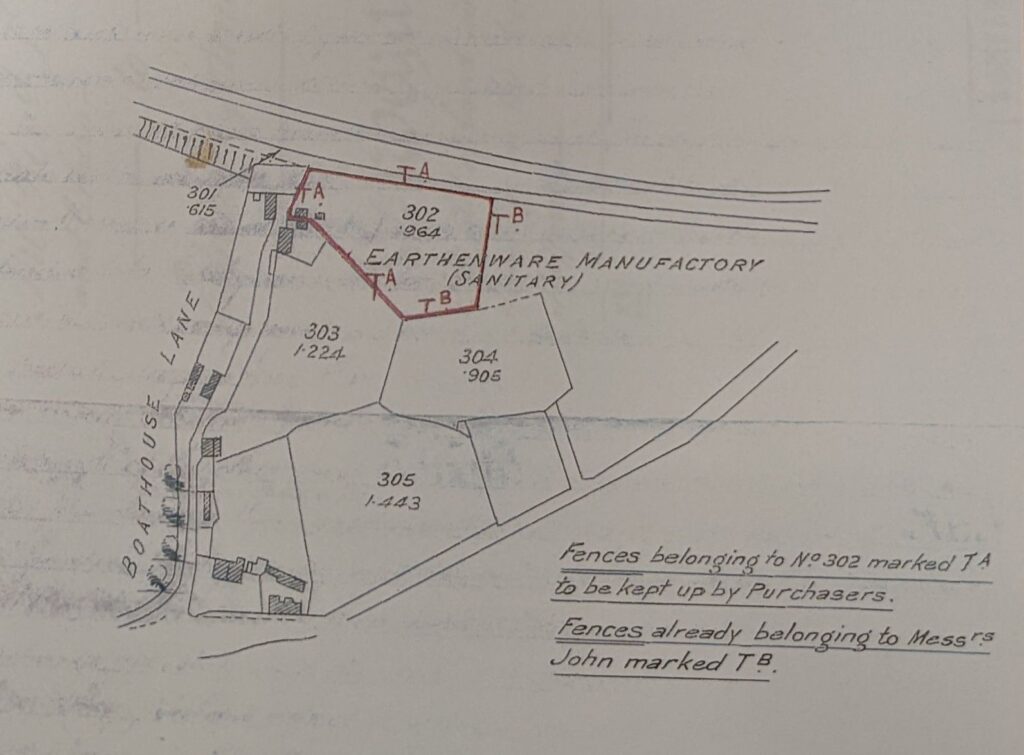
This toilet marked P.B. & Co is the only piece of Penman & Brown’s manufacture that exists today as far as I know although Bill Wright, in his 1951 booklet entitled Notes For A History Of Armitage, states that there were some dinner plates in Armitage at that time which were stamped P.B. & Co.
This toilet was a high status product and would have been used in a similar fashion to that shown below – you can see where the flush handle sits to the side.
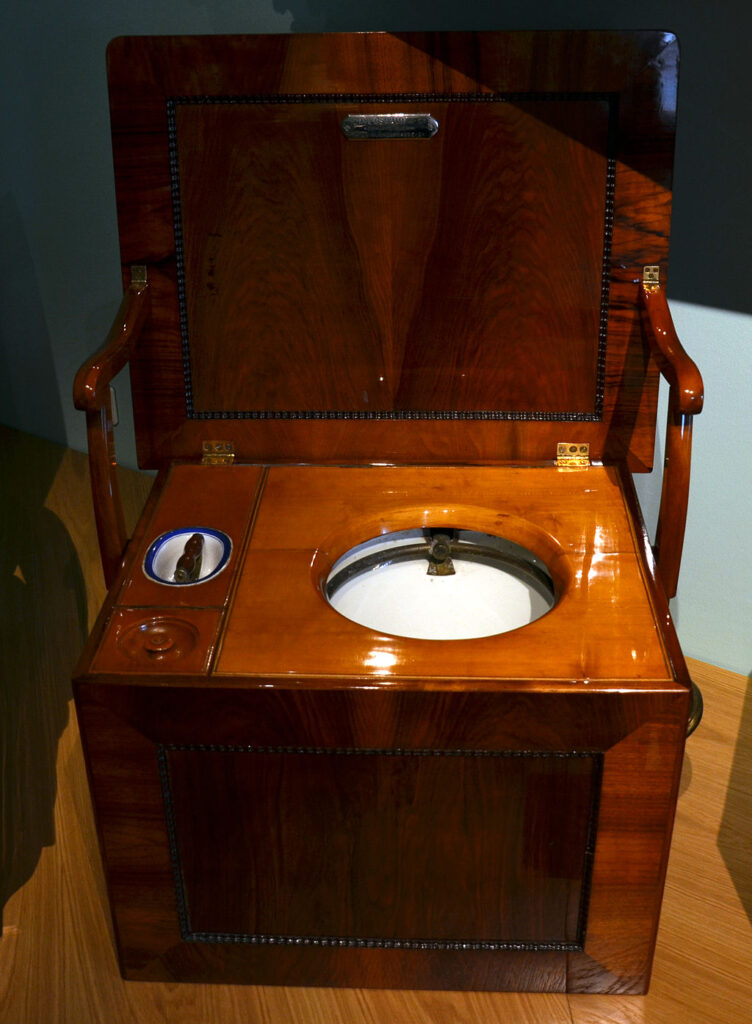
The pattern on the inside of the toilet would have been created by copper plate printing. The pattern was engraved onto a copper plate which was then printed onto tissue paper with the selected colour. The tissue was used to transfer the pattern onto the body of the unglazed pot with the colour side next to the ware and rubbed into position with flannel rubbers. The ware at this stage is porous so the oil, colour and paper are retained on the ware – the paper is later removed by sponging with water. Before the item could be glazed any decorated ware needed to be hardened off in an oven – this removed the absorbed oil, leaving the colour on the ware. If this was not done, the oily surface would not take the glaze. The glaze could then be applied and the ware fired again to give a hard, impervious finish. As the pottery was quite small the engraved copper plate would probably have been bought in from a specialist supplier.
Sanitary ware design moved on over the next forty years or so but in the 1890s Edward Johns & Co Ltd were still selling this type of product as shown below – in the catalogue it is shown as an ‘improved closet basin’, manufactured in either white or cream and printed inside if required – and they would have still have been using the same printing method as in the 1850s.
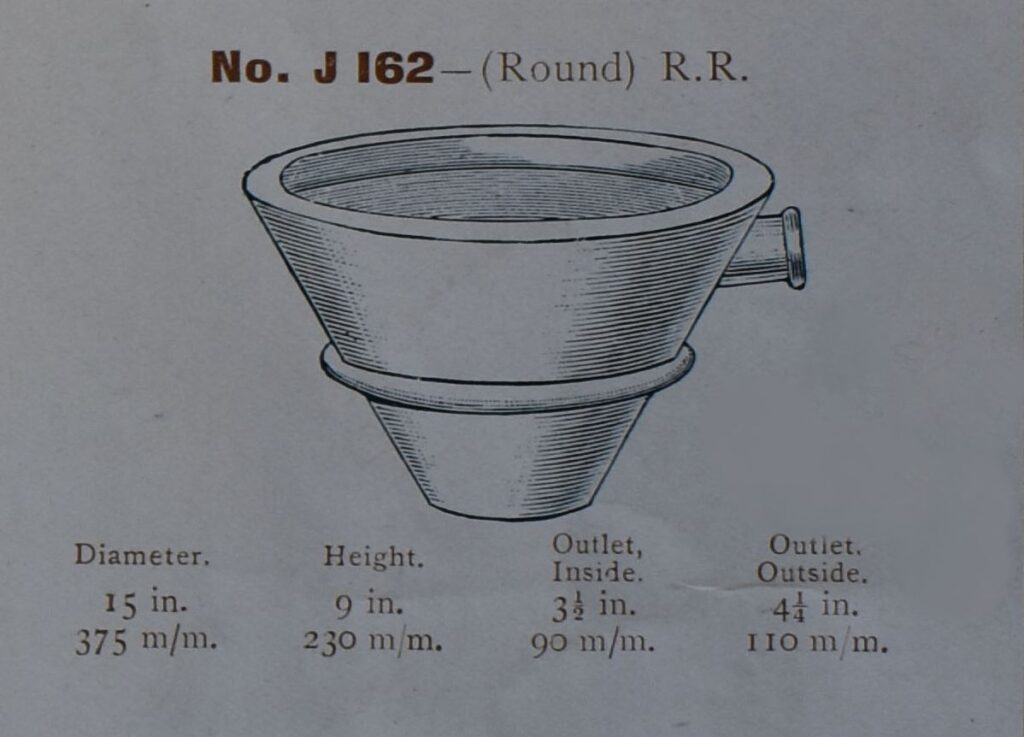
And Robert Hedderwick Penman? With a new partner, John Oslear, he closed his pottery down in 1860 and they both moved to Glasgow, along with quite a few of his employees, and took over an existing pottery. He renamed that pottery the Armitage Pottery and ran it for about six years with various partners. After that he emigrated to the USA where he, once again, worked as a shipping agent. He did though carry on making his own pottery and became quite a locally well-known artist in New York.

Marvellous! This could start a trend- ‘variety of locations for Armitage ware’.
There was a cane and white found in a cell in Bodmin jail
Beautiful design and artistry on the toilet bowl by Penman & Brown (PB)
You indicate that this piece is the only one of which you are aware in existence made by P&B.
I do have a pitcher made by Robert H Penman about the same time. Let me know if you would like to see a photo.
I would love a photo!